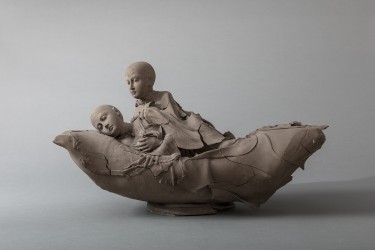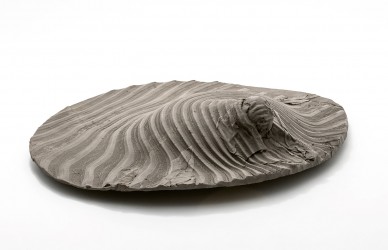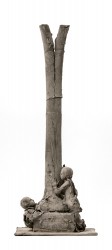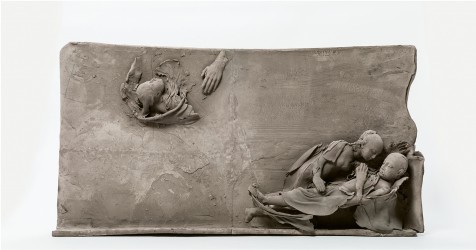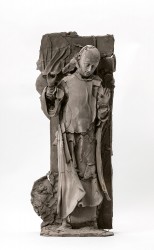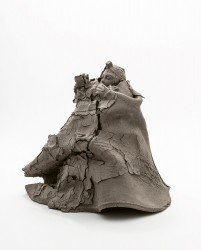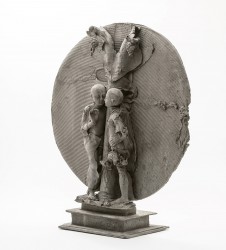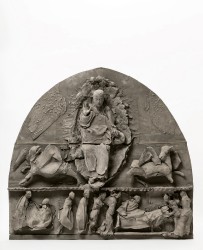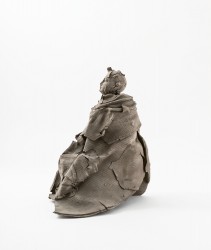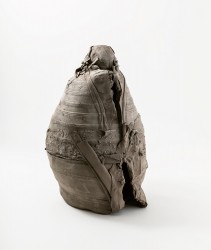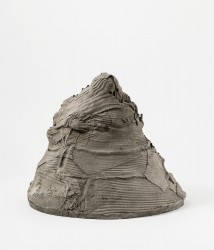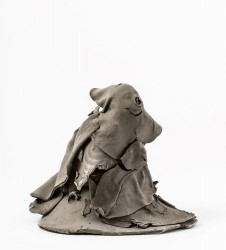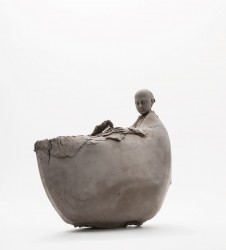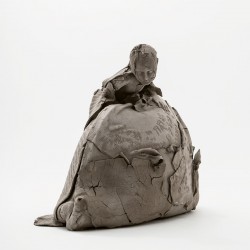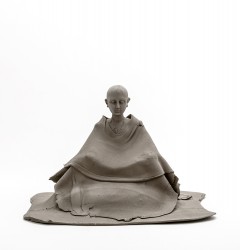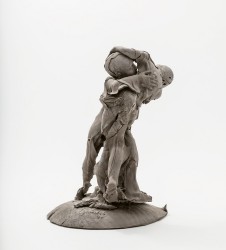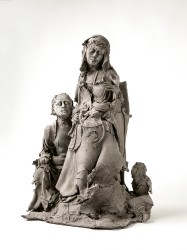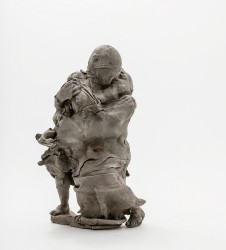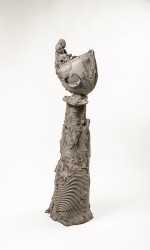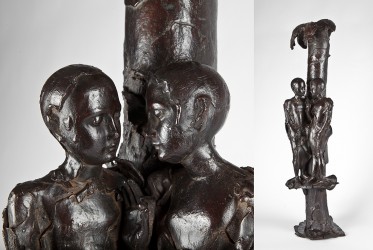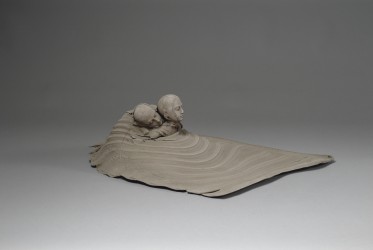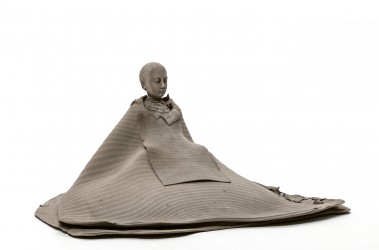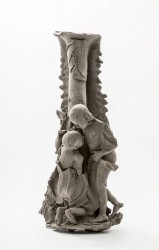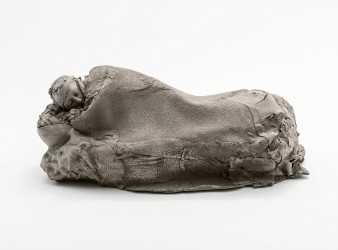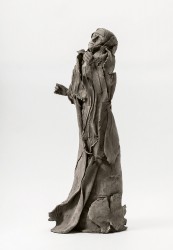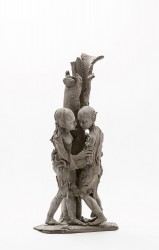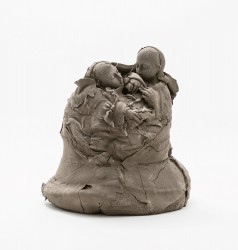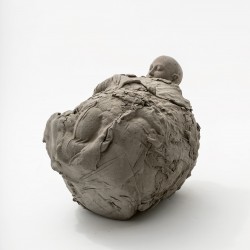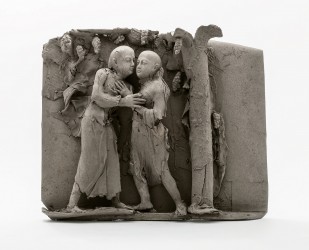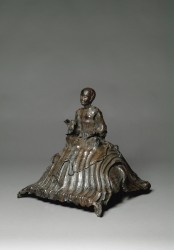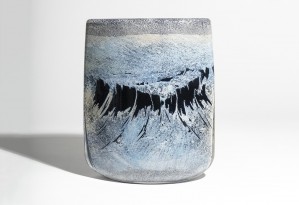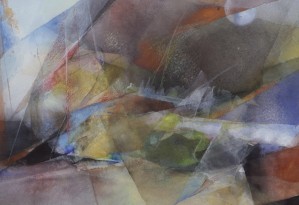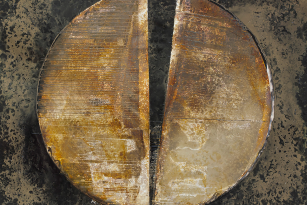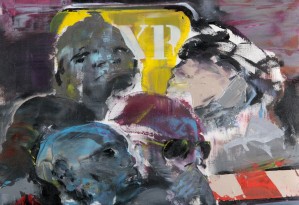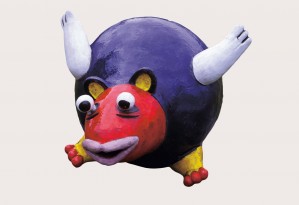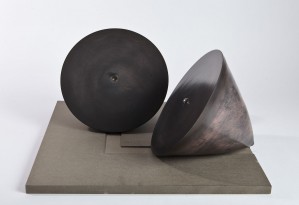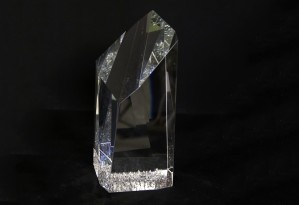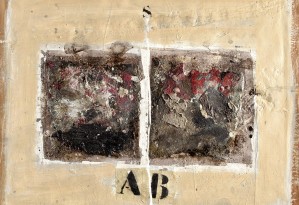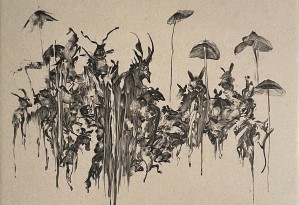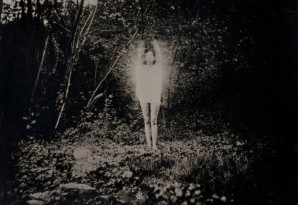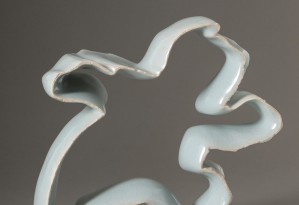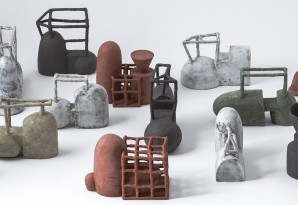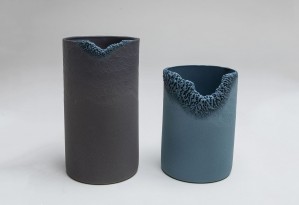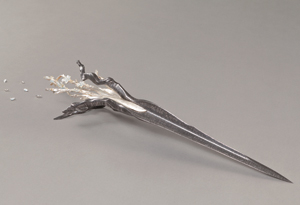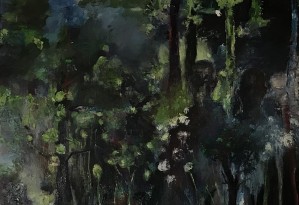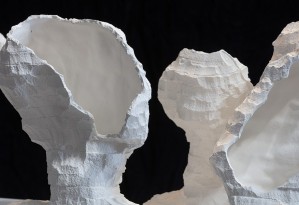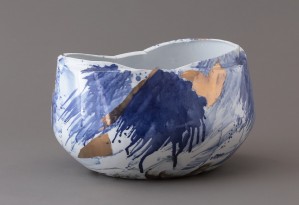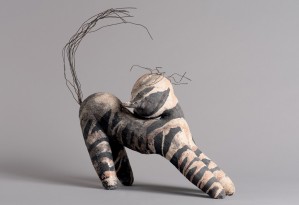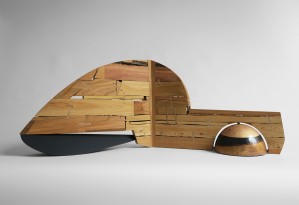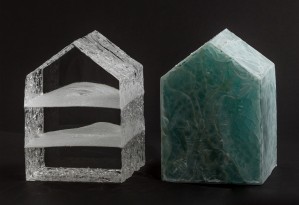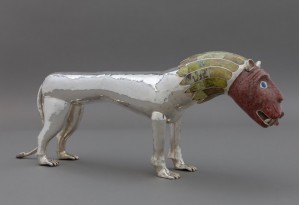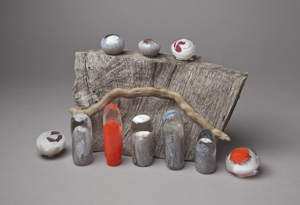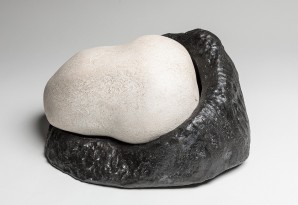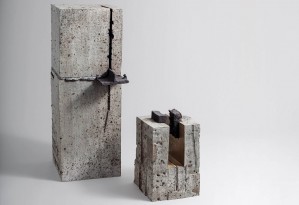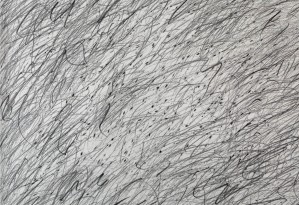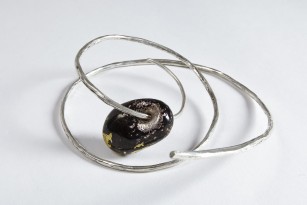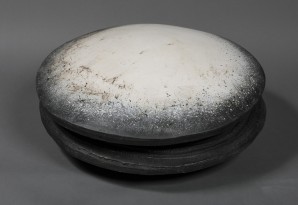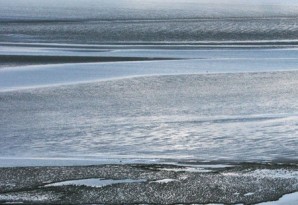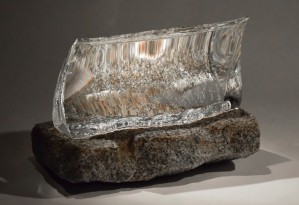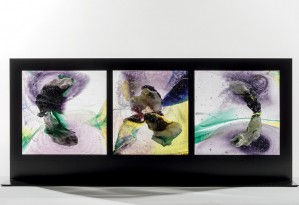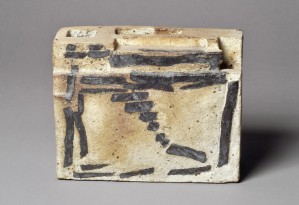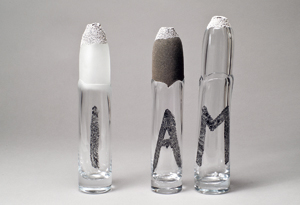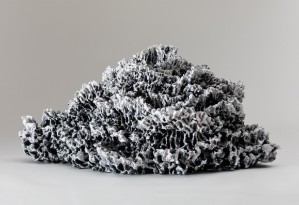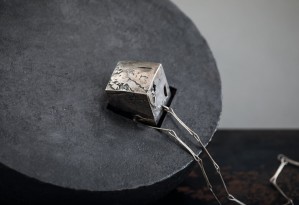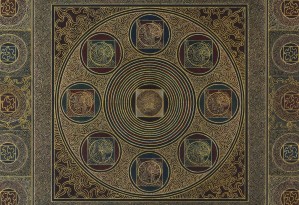JEANCLOS Georges, sculpture, permanent artist of the Galerie Capazza since 1995
Georges Jeanclos (1933-1997) is one of France’s great twentieth-century sculptors. His work is rooted in the traumatic events of the Second World War. To escape the round-ups that threatened French Jews, his family was forced to hide in the woods; Jeanclos, barely ten at the time, had several close brushes with death. When the country was liberated, he saw the corpses of former collaborationists strung up from lampposts; shortly thereafter, he discovered the skeletal bodies of camp survivors. Decades later, Jeanclos would respond to these seminal events: not by locking himself away in his own experience but by opening up to universality and paying attention to all forms of suffering, past and present; not by representing horror, but by finding within himself the strength to create beauty.
Jeanclos’ choice medium was clay. He transformed it into thin sheets with which he then shaped human figures. Simultaneously children and adults, men and women, their faces are almost identical. Some are dormeurs resting beneath a coverlet of clay; others are hidden within urns bearing Hebrew letters drawn from the Kaddish; others are boat travelers bound for the Beyond; still others are kamakuras, meditating bonzes lost in contemplation of the soul’s gardens. To all these, Jeanclos would later add Pietas, amorous Adams and Eves, couples tenderly grazing or stroking one another other. His images reveal both the undeniable weakness of human beings and the invincible strength of love; by the simple fact of their existence, they help us to live.
Tzvetan Todorov
Biography
Jeanclos was born in Paris into a Jewish family, his name was Georges Jeankelowitsch at that time.
When he was one year old, the family moved to Vichy; they cannot imagine the role that this city will play in the destiny of France in the coming years.
In June 1940, the military debacle broke out and Vichy became the capital of the French state, limited to what was then called the free zone. This fiction collapses in November 1942, when the German army occupies the entire territory. In January 1943 the militia was created, a French armed group in the service of the fascist ideal.
The Jeankelowitsch family first took refuge in a village; one day, in August 1943, the teacher came to warn them that the Germans were trying to arrest them. The family settles in a hut in the middle of the woods; the parents hide in it and never came out. For a year, the children had to go to the nearby villages, where the German soldiers were stationed, to get supplies.
In August 1944, the Germans fled, the Jeankelowitsch could come out of the woods. But the following days bring further traumatic experiences. "I saw the purges, the lynchings, the hatred, the collabos hanging by their feet from lampposts as we left the school." Shortly afterwards came the revelations about the extermination camps, the names Auschwitz and Treblinka took on their burden of horror and the family discovered with horror the magnitude of the disaster they had just experienced to escape: its members are the survivors of a decimated community.
The blows fell very close: among the victims were Georges' uncle and aunt, who lived in the nearby town of Saint-Amand-Montrond; they were arrested by the militia and massacred by members of the Gestapo. It was in connection with these events ("I lost my name in 1945") that, a few years later, the family abandoned its original name and adopted the French version "Jeanclos".
In 1947, at the age of fourteen, Jeanclos, who was then living in Vichy, chose with the full agreement of his parents to devote himself to artistic creation: he left school and began an apprenticeship with a sculptor, Robert Mermet, in the nearby town of Cusset. Jeanclos stayed with him until 1949, trying to do as well as the master, happy to see the red clay to submit to his will. Georges Jeanclos entered the Beaux-Arts of Paris in 1952 and graduated in 1958.
At the end of his studies, Jeanclos had to complete his military service: twenty-eight months! He will not be sent to Algeria because his brother died there as a soldier. During his service, he could even compete for the Prix de Rome; he won first prize and, in 1960, left for the Villa Medici, where he stayed until 1964.
During these same years he got married and became the father of three children. Back in France, he had to earn his living, which he did by making small terrines, sold in shops. In 1965, he became a professor at the Beaux-Arts of Le Mans, and in 1966 he began to teach at the Beaux-Arts of Paris.
In 1970, he decided to go back to school: he settled in the Marais (former Jewish quarter in Paris) and started his Hebrew studies again.
His first artworks to see the light of day are the dormeurs (sleepers). The sleeper is modeled using a thin sheet of clay, and is then covered with a second sheet, a sheet of clay. All the sleepers have a head, a face, but it is always the same, devoid of any particular characteristic: they are without age or sex, can appear indifferently men or women, adults or children.
The second figure that will come to inhabit Jeanclos' work is the urne (urn).
These works were created in reaction to the death of Jeanclos' father in 1976. For a year, the son went to the synagogue to recite Kaddish, the prayer in honor of the dead, which he felt the need for, without even understanding its exact meaning.
The figures enclosed in the urns, of which we can see part of the head, sometimes a hand, of which we can guess an elbow, a foot.
Since 1979, every year, he has undertaken great journeys that take him to all the countries of the world, to Latin America, Africa and Asia. It is Japan that will leave the strongest impact on him: it will give him a new figure, called by Jeanclos Kamakura, in reference to the capital of Japan in the Middle Ages.
Whereas the sleepers or the inhabitants of the urns, the Kamakuras were dream images of himself, of an isolated being standing on the edge of life or immersed in the contemplation of his inner garden, from now on he shows characters who touch each other, talk to each other, participate in a story.
From this moment in his evolution, Jeanclos will make the couple one of his favorite motifs.
In previous years, he sometimes depicted several characters together, two sleepers under the same blanket, two bodies enclosed in the same urn, or even two Kamakuras covered with the same cloth.
n 1985, Jeanclos lost his mother. This event is also reflected in his work, leading him to introduce a new element: the barques (boats). Once again, it is an encounter between an inner experience and a form received from elsewhere: he thinks of the funeral boats found in Egyptian tombs.
Another event occurs at the same time in Jeanclos' life that will transform his work: his sculptures begin to be known. He was solicited by various public entities who commissioned him to create monumental artworks that were to remain in the open air.
The first major public commission was addressed to him in 1983: he was asked to sculpt a monument in homage to Jean Moulin, the leader of the Resistance. The second major commission, Jeanclos received it in 1985: he was asked to complete the tympanum of the portal of a 12th century Gothic church, Saint-Ayoul in Provins. He accepted with enthusiasm; this work will occupy him for five years.
In 1992, Jeanclos received the order for a commemorative monument, to be placed at the place called Guerry, near Bourges, where, fifty years earlier, his uncle and aunt had been thrown, along with dozens of other Jews, into deep wells where they died of suffocation.
The shattering monument will be completed in 1994 and consists of two columns. The first column holds the bodies that fall; the second contains those that rise to the surface.
Jeanclos was not satisfied with representing the crime, he wanted to represent a resurrection as well. These two columns are called The Fall and The Rise of the Bodies. It is these two movements that give meaning to this artwork.
In 1996, Jeanclos was diagnosed with throat cancer - which he was to die of the following year. While convalescing, he hurries to complete a new public commission, the portal of the Notre-Dame-de-la-Treille cathedral in Lille.
Biography realized with the help of passages from the text
"La force de la fragilité" by Tzvetan Todorov
To know more
One Month - One Artist is a monthly event to make you discover the artists of the gallery.
Find the one dedicated to Georges Jeanclos published in March 2020, to download here ![]()
Public orders
1983-84 Memorial monument for Jean Moulin, Champs Elysées, Paris, France
1985 Door of the Ministry of finance, Bercy, Paris
1985 Tympanum over the door of the Saint Avoul Church, Provins, France
1989 Fountain of the Stalingrad Place, Paris, France
1992 Low relief at the Carrières-sur-Seine College, France
1993 Decoration of the entrance of the Department Police Office, Toulouse, France
1994 Memorial monument for the tragedy of the Guerry wells, France
1996 Saint-Julien-le-Pauvre Fountain, Viviani square, Paris
Read morePublic collections
- Musée d’Art Moderne de la Ville de Paris
- Fonds National d’Art Contemporain
- Musée des Beaux-Arts, Lyon
- Musée Cantini, Marseille
- Musée d’Ixelles, Bruxelles
- Fondation Johnson, USA
- Jewish Museum, New York
- Musée d'Art et d'Histoire du Judaïsme, Paris
- FRAC Alsace-Lorraine, Haute-Normandie, Champagne-Ardenne, Poitou-Charentes
- Fondation du judaïsme français, Paris
- Centre culturel de l’Yonne, Auxerre
- Musée de Cambrai
- Musée d’Israël, Jérusalem
- Musée de Tessé, Le Mans
- Royal Ontario Museum, Toronto
- Azabu Juban Community Stores, Pedestrian Sidewalk, Japon
- Institut du Monde Arabe, Paris
Personal exhibitions
2020 Georges Jeanclos-Auguste Rodin : Modeler le vivant, Galerie Capazza, Nançay. In partnership with the Musée Rodin
2018 Solo show during the Art Paris Fair 2018
2017 Murmures - 1 exhibitions, 2 locations. Galerie Capazza, Nançay and Palais Jacques Coeur, Bourges
2011 Galerie Capazza, Nançay
2010 Galerie Capazza, Art Elysées, Paris
2009 Galerie Capazza, Art Elysées, Paris
2006 Galerie Claude Bernard, Paris
2004 Galerie Capazza, Art Paris
2002 Musée d’Art et d’Histoire du Judaïsme, Paris
1999 Musée de l’ Hospice Comtesse, Lille
Rétrospective Georges Jeanclos, Musée Daubigny, Auvers-sur-Oise
Galerie Capazza, Nançay
1998 Garth Clark Gallery, SOFA, New York, USA
1997 Garth Clark Gallery, New York, USA
1996 Musée Labenche, Brive-la-Gaillarde
Galerie Albert Loeb, Paris
LARC, Scène Nationale, Le Creusot
1995 Royal Ontario Museum, Toronto, Canada
Galerie Capazza, Nançay
1993 Centre culturel de Boulogne-Billancourt
Musée de Tessé, Le Mans
1990 Galerie Albert Loeb, Paris
Galerie Patrice Trigano, FIAC, Paris
1989 Musée des Beaux-Arts, Saintes
Le Prieuré d’Airaines, Somme
1988 Herzliya Museum of Art, Israël
Musée d’Arad, Israël
Musée de Cambrai
Galerie Mira Godard, Toronto, Canada
Galerie Albert Loeb, FIAC, Paris
1987 Galerie Woltjen-Udell, Emonton, Vancouver, Canada
Galerie Albert Loeb, Paris
Galerie Claude Bernard, New York, USA
1986 Galerie Mira Godard, Toronto, Canada
Maison de la Culture, La Rochelle
1985 Centre culturel de l’Yonne, Auxerre
Galerie Claude Bernard, Paris
1984 Galerie Lanzenberg, Brussels, Belgium
Maison de la Culture, Orléans
Galerie Albert Loeb, Paris
1983 Musée d’Art Moderne, Troyes
1981 Galerie Albert Loeb, Paris
Osuna Gallery, Washington, USA
Galerie Lanzenberg, Brussels, Belgium
1980 Galerie Albert Loeb, FIAC, Paris
Galerie Jade, Colmar
Forum Gallery, New York, USA
1979 Galerie Albert Loeb, Paris
1978 CAC, Pontoise
Galerie Lanzenberg, Brussels
1977 Galerie La Touriale, Marseille
Galerie Noella Gest, FIAC, Paris
Galerie Lacloche, Paris
Centre Georges Pompidou, « Ateliers d’aujourd’hui », Paris
Galerie Lanzenberg, Brussels, Belgium
Musée de Botrop, Germany
Musée d’Essen, Germany
1974-75 Galerie Shandar, Paris
1973 Maison de la Culture, Vichy
1966 Oslo et Cologne
1964-67 Galerie 9, Paris
1960-61 Galerie Jardin des Arts, Roma, Italy
Read more